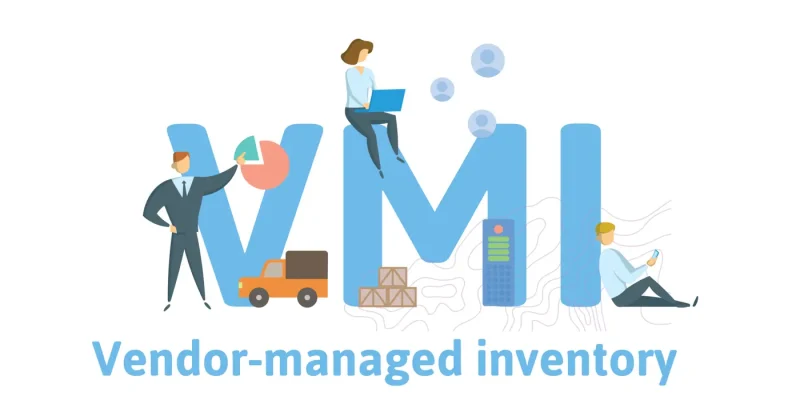Introduction
Stock turnover rate is a critical metric that measures how often a company sells and replaces its inventory within a given period. A higher stock turnover rate typically indicates strong sales and efficient inventory management. Vendor management inventory is one strategic tool businesses use to optimize turnover rates and improve operational performance.
Understanding Vendor Management Inventory
What Is Vendor Management Inventory?
Vendor management inventory is a system where the supplier takes responsibility for managing and replenishing inventory for the buyer. Through this arrangement, suppliers gain better visibility into stock levels and customer demand. This proactive approach can result in more accurate restocking and reduced inefficiencies.
Key Components of a VMI System
A successful vendor management inventory system relies on consistent data sharing and transparency between the supplier and the buyer. Inventory monitoring tools allow suppliers to track stock levels in real-time and adjust shipments accordingly. Collaborative forecasting based on shared information helps ensure that inventory aligns with current and anticipated customer needs.
The Role of VMI in Improving Stock Turnover Rates
Reducing Stockouts and Overstock
Vendor management inventory helps balance stock levels by minimizing the risk of stockouts and overstock situations. By giving suppliers direct access to inventory data, they can make timely replenishment decisions that keep shelves stocked without excess. This balance plays a crucial role in maintaining an ideal stock turnover rate.
Faster Replenishment Cycles
Because vendors closely monitor inventory levels under a vendor management inventory program, they can initiate faster replenishment without waiting for manual orders. This quicker response helps avoid lost sales due to out-of-stock products and keeps inventory flowing smoothly. In turn, faster replenishment cycles contribute to improved stock turnover and more efficient operations.
Smoother Demand Planning
With vendor management inventory, suppliers and businesses work together using real-time sales and inventory data. This collaboration makes demand planning more accurate, reducing the risk of forecasting errors that could impact turnover rates. Smoother demand planning ensures inventory moves consistently in response to customer needs.
Advantages of Better Stock Turnover Through VMI
Lower Carrying Costs
Improved stock turnover through vendor management inventory can significantly reduce carrying costs. Businesses spend less on storage, insurance, and depreciation when inventory levels are optimized. Lower carrying costs directly improve profitability and operational efficiency.
Increased Sales and Customer Satisfaction
When vendor management inventory ensures that products are consistently available, businesses can better meet customer expectations. Increased availability leads to more completed sales and fewer missed opportunities. Satisfied customers are also more likely to return, boosting long-term revenue.
Improved Supplier Relationships
Vendor management inventory fosters stronger partnerships between suppliers and businesses by creating a more collaborative working environment. Clear communication and shared goals help build trust and reliability on both sides. These improved relationships contribute to smoother operations and more sustainable growth.
Challenges to Watch Out For
Communication Gaps
Even with vendor management inventory, poor communication can create problems such as delayed shipments or stock imbalances. Clear protocols and regular updates are essential to keep both parties aligned. Without strong communication, the full benefits of VMI may not be realized.
Integration and Technology Barriers
Implementing vendor management inventory successfully requires the right technology infrastructure. Systems must be able to share real-time data accurately and securely between vendors and buyers. Outdated or incompatible systems can hinder the effectiveness of VMI programs and slow down stock turnover improvements.
Best Practices for Successful VMI Implementation
Setting Clear Metrics and KPIs
Setting measurable targets such as stock turnover rates, fill rates, and order accuracy is vital for vendor management inventory success. These metrics help both vendors and businesses track performance and make informed adjustments. Clear KPIs also ensure accountability and promote continuous improvement.
Choosing the Right Partners
Vendor management inventory success depends heavily on selecting partners who are proactive, reliable, and committed to collaboration. Strong vendor partnerships make it easier to manage inventory levels efficiently and respond to market changes. Careful selection of vendors helps prevent common challenges and enhances overall program effectiveness.
Regular Review and Adjustments
Like any business strategy, vendor management inventory requires regular evaluation and refinement. Market trends, customer behavior, and business goals can shift over time, and VMI strategies must adapt accordingly. Ongoing review ensures that the system remains aligned with business needs and continues to drive better stock turnover.
Key Takeaways
Vendor management inventory provides a powerful framework for improving stock turnover rates and streamlining inventory management. By fostering collaboration between suppliers and businesses, it enables more accurate forecasting, faster replenishment, and better customer satisfaction. With careful implementation and regular review, vendor management inventory can be a key driver of operational success.











Comments